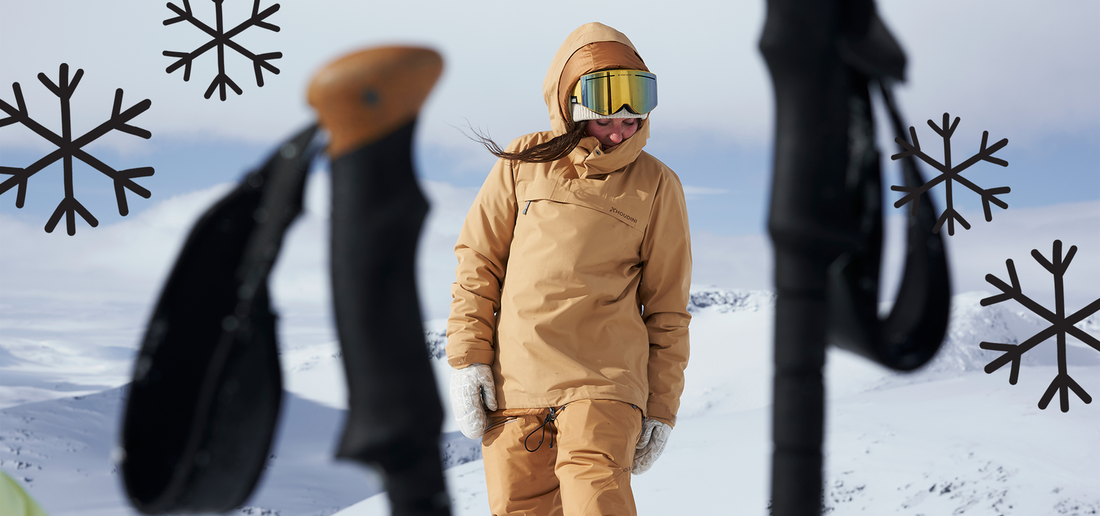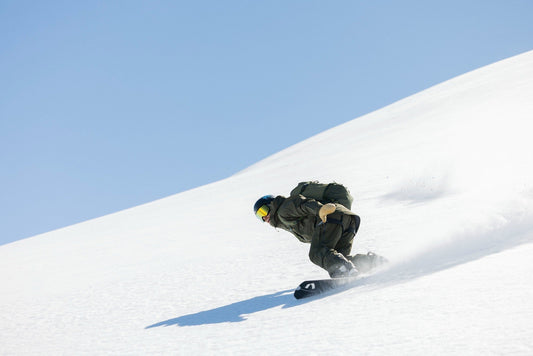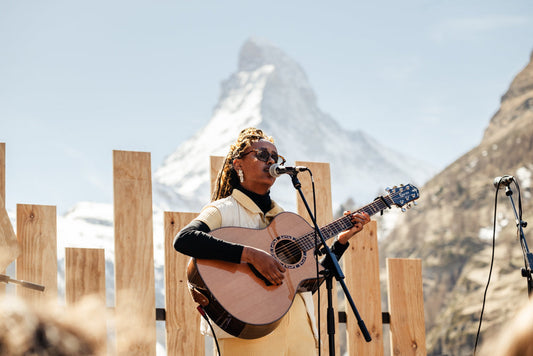Houdini interview: Design concepts and circularity

We talked to Jesper Danielsson, Head of Design at Houdini Sportswear to find out more on their design concept, and which products are best for ski clothing rental.
Introducing Houdini Sportswear
Houdini believes that the current system of consumption - where products are produced, used and discarded at an ever increasing pace - is not working. They are on a mission to transform into a circular system in harmony with our planet.
Houdini Sportswear is stacked full of passionate skiers, surfers, and custodians of the natural world. Fuelled by their passion for the outdoors, the Houdini team are working to minimise their footprint, move beyond zero, and leave an entirely positive impact.
Houdini first heard of Cirkel Supply Co. when we reached out to see if their products would be a good fit for our rental offering in Switzerland. Houdini jumped at the chance, sending a delivery of premium Houdini goods to test our circular system. Since day one, the Houdini team has been bjussig (kind and generous) in their support of Cirkel, helping us to grow and shape a sustainable and circular future.
Introducing Jesper Danielsson
We caught up with Jesper Danielsson, Head of Design at Houdini to learn more about the brand, and how they build quality products that are versatile, low impact, and built to last. Jesper is a skier and trail-runner. He can be found in the Swedish mountains with his family on hut-to-hut tours, perfecting his campfire pancake skills (much to his childrens’ delight).

What's your role at Houdini?
We have built Houdini with a user centric approach. I oversee the offering towards our end-user. From innovation of materials and concepts, to designing and bringing products and services to our customers. I get to work with great people both internally and externally to reimagine how products and services are created.
What's your favourite thing about working with Houdini?
More often than not, design methodology contradicts the linear world. In today’s consumerism, the focus no longer lies on creating amazing experiences, but on price points, and the amount of pockets a product needs.
At Houdini I get to relentlessly push boundaries to help shift that norm, creating beauty beyond imagination and reimagining the future of textiles. My favourite thing is building products and experiences for people who love to be in nature and love reconnecting to it with others – just like myself.

What's the design concept behind Houdini?
We always work with our four principles of design!
Less is more:
- Less chemicals.
- We do not need more clothes – we need better clothes. We create minimalist multi-tools that enable a versatile lifestyle. Smarter garments which allow you to own less, and are suited for many different types of adventures.
- Less details (bells and whistles). This makes for more durable garments that last longer, both from a durability perspective (less things that can break) as well as the aesthetic perspective – you’re less likely to get tired of it.
Built to last:
- Really great products are built to last. No product is stronger than its weakest component. From how we choose fibres, to the zippers, and the seam elasticity in so that even after 1287 wears, the garment feels the same as the first time you used it. Why?! 1287. In a recent survey, we learned that 1287 is the average number of uses of our popular midlayer, the power houdi. And at this point, there are still a good 2-3 years of use left, according to our end-users.
- Making a product that holds up to that durability standard also means that the lines of the design need to endure.
Holistic comfort:
- Maintaining the user’s microclimate is at the core of each and every product.
- A well-designed garment also embraces individuality, allowing you to express who you are: to blend in or to stand out whenever you want.
- For us, comfort also means that we make sure that everyone creating these products is looked after in the same way. The Houdini team has the opportunity to take parental leave and to go home to their kids.
Circularity:
- We believe everything is borrowed from nature, and at one point in time everything goes back to nature. We use resources in one form, and ensure that they can transform into another when they’re ready.
- We work with two cycles. A biological one - where Nature is the blueprint, and a technical one - where we mimic Nature. The first works with renewable or recycled materials that can be recycled or are biodegradable to a compostability level. The second uses mono material synthetics like polyester, that are recycled and recyclable. We never mix the two cycles, which allows us to repeat this over and over again.

How do you design clothing that will last longer?
Our goal has never been to become the latest news, but to never become old. By aiming for meaningful innovation and designing the icon of the future we stay contemporary over time. By reimagining archetypes, we are able to create products that last a lifetime.
What circular offerings does Houdini Sportswear have?
Our vision is to scale a relationship-driven economy, rather than a transactional one. Allowing our end-users to step into our world, and let it enable their adventures.
Our products become lifelong-companions. Should you lose interest in a colour, we offer Reuse – our second hand collection. Offered in Houdini stores and on our website, it enables you to sell the product to others through us, or sell it back to us.
If any of your products break, we offer repair to extend its lifetime, ensuring that it can live on for more adventures. We have been collecting garments for more than a decade. When collecting garments that end-users think are worn out, we are usually able to give it the breath of life through repair or remake.
Since 2012 we have also offered Rental. For us this model is essential to offer to individuals who are keen to try new activities, or who only go skiing for a couple of weeks a year. With rental, we share wardrobes on a meta-level, and ensure top-notch experiences.
What kind of products are perfect for rental?
The products you do not already own, and won’t use often. Earlier I referred to our design principles. These are a pragmatic tool to ensure products hold up to the requirements of rental. However, I believe that the user doesn’t always benefit from renting all of them. So the perfect rental product really depends on the activities you do regularly (better to own), and the activities you do infrequently (better to rent).
What is the goal for Houdini's partnership with Cirkel Supply?
We aim to be the best, not the biggest brand in the world. To achieve that we need to work with the greatest within each field. Working together with partners like Cirkel Supply is key to creating a shift in our industry.

Together, we are creating a system to reach more end-users, and gain more knowledge. Feedback loops of materials are a great feature of circular models. But equally important are the loops of data and knowledge. Providing insights to a smarter and more effective way forward. From creating better products, to offering the right products in the right place, and inspiring more people to care for our planet.













